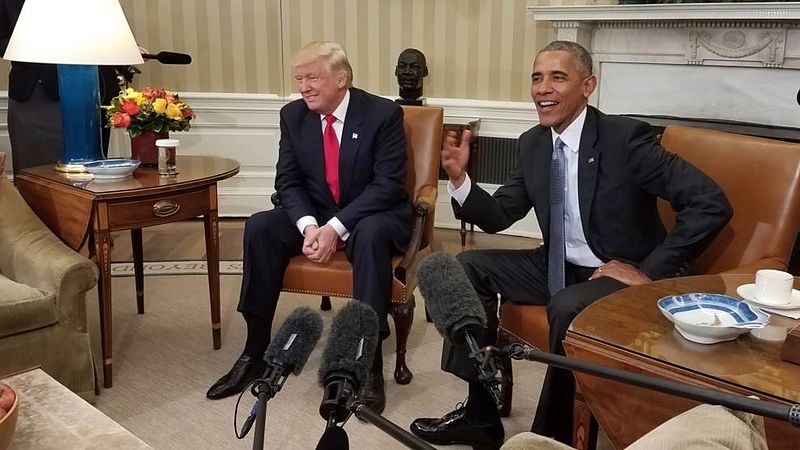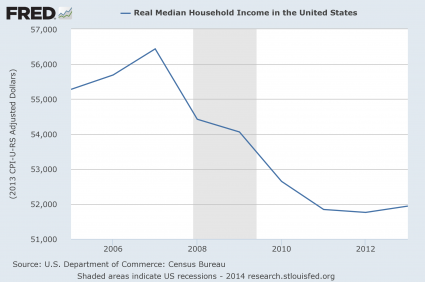 When some good economic news comes along, we should be thankful for it, because such moments are becoming increasingly rare. On Friday, the Labor Department announced that the U.S. economy added 128,000 jobs last month, and that definitely exceeded expectations. Of course the truth is that the U.S. economy didn’t actually add 128,000 jobs last month. That number is just a heavily manipulated estimate that is adjusted to smooth out “seasonal fluctuations”, and it will be revised multiple times in the future as more data becomes available. In other words, the government is giving us an educated guess about what they think might have happened, and it is based on certain assumptions that may or may not be reasonable. But considering all of the other horrible economic news that we have been getting lately, any number above zero is a reason to celebrate. The employment situation in this country still appears to be relatively stable, and we should hope that continues to be the case for as long as possible.
When some good economic news comes along, we should be thankful for it, because such moments are becoming increasingly rare. On Friday, the Labor Department announced that the U.S. economy added 128,000 jobs last month, and that definitely exceeded expectations. Of course the truth is that the U.S. economy didn’t actually add 128,000 jobs last month. That number is just a heavily manipulated estimate that is adjusted to smooth out “seasonal fluctuations”, and it will be revised multiple times in the future as more data becomes available. In other words, the government is giving us an educated guess about what they think might have happened, and it is based on certain assumptions that may or may not be reasonable. But considering all of the other horrible economic news that we have been getting lately, any number above zero is a reason to celebrate. The employment situation in this country still appears to be relatively stable, and we should hope that continues to be the case for as long as possible.
Of course nobody should be using words like “boom” or “booming” to describe what is happening. An increase of 128,000 jobs in one month is not nearly enough to keep up with population growth.
So if the U.S. economy actually did add 128,000 jobs last month, the truth is that we would actually be losing ground.
But at least the jobs number was significantly better that most analysts were projecting…
Nonfarm payrolls rose by 128,000 in October as the U.S. economy overcame the weight of the GM autoworkers’ strike and created jobs at a pace well above expectations.
Even with a decline of 42,000 in the motor vehicles and parts industry, the pace of new jobs well exceeded the estimate of 75,000 from economists surveyed by Dow Jones. The loss of jobs came due to the General Motors strike that has since been settled. That 42,000 job loss itself was less than the 50,000 or more that many economists had been anticipating.
Hopefully we can have at least a couple more months like this one before the job losses really start becoming severe.
But this is definitely not an indication that the U.S. economy is heading in the right direction. Because job gains did not keep up with population growth, it makes sense that the unemployment rate actually went up last month…
The unemployment rate, which is calculated from a different survey, rose from a 50-year low of 3.5% to 3.6%, the Labor Department said Friday. That’s because a strong increase in employment was offset by an even bigger rise in the labor force, which includes Americans working and looking for jobs.
Also, it is very important that you do not let that “3.6 percent” figure fool you.
As John Williams has documented, if honest numbers were being used the unemployment rate in the United States would currently be 21 percent. That is down a couple of percent from the peak of the last employment crisis, but it is still not good at all.
And even though the jobs number that we just got was good news, more bad economic news continues to pour in at an alarming rate. According to the latest projection from the Federal Reserve Bank of Atlanta, the U.S. economy is on track to grow at a rate of just 1.1 percent in the fourth quarter…
The GDPNow model estimate for real GDP growth (seasonally adjusted annual rate) in the fourth quarter of 2019 is 1.1 percent on November 1, down from 1.5 percent on October 31. After this morning’s release of the employment report by the U.S. Bureau of Labor Statistics, the Manufacturing ISM Report On Business from the Institute for Supply Management, and the construction spending report from the U.S. Census Bureau, the nowcasts of fourth-quarter real personal consumption expenditures growth and fourth-quarter real gross private domestic investment growth decreased from 2.3 percent and -0.7 percent, respectively, to 2.2 percent and -2.5 percent, respectively.
That is horrible, but at least it is still a number that is above zero.
Unfortunately, GDP growth for our neighbor to the south has already fallen below that line. The following comes from Wolf Richter…
In the third quarter of 2019, Mexico notched up its first year-over-year decline in GDP since the final quarter of 2009, when it was in the midst of a sharp recession brought on by the Financial Crisis. According to a preliminary estimate published by Mexico’s statistical institute INEGI, in the third quarter, the economy shrank 0.4% compared with the same quarter a year earlier.
So what should we make of all this?
Clearly, the U.S. economy is slowing down. The temporary reprieve that we have been enjoying for the past few years appears to be ending, but the jobs number that we got today indicates that it is not done quite yet.
Ultimately, that is good news.
One of the most precious resources that any of us has is time. If the U.S. economy can remain at least somewhat stable for a little while longer, that buys us some time, and all of us should be using that time wisely.
Because the truth is that the clock is ticking, and economic conditions in the United States are about to make a dramatic turn for the worse.
About the Author: I am a voice crying out for change in a society that generally seems content to stay asleep. My name is Michael Snyder and I am the publisher of The Economic Collapse Blog, End Of The American Dream and The Most Important News, and the articles that I publish on those sites are republished on dozens of other prominent websites all over the globe. I have written four books that are available on Amazon.com including The Beginning Of The End, Get Prepared Now, and Living A Life That Really Matters. (#CommissionsEarned) By purchasing those books you help to support my work. I always freely and happily allow others to republish my articles on their own websites, but due to government regulations I can only allow this to happen if this “About the Author” section is included with each article. In order to comply with those government regulations, I need to tell you that the controversial opinions in this article are mine alone and do not necessarily reflect the views of the websites where my work is republished. This article may contain opinions on political matters, but it is not intended to promote the candidacy of any particular political candidate. The material contained in this article is for general information purposes only, and readers should consult licensed professionals before making any legal, business, financial or health decisions. Those responding to this article by making comments are solely responsible for their viewpoints, and those viewpoints do not necessarily represent the viewpoints of Michael Snyder or the operators of the websites where my work is republished. I encourage you to follow me on social media on Facebook and Twitter, and any way that you can share these articles with others is a great help.






